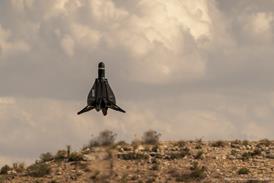Ramon Lopez/WASHINGTON DC

The US Army is to fit the Rotorcraft Pilot's Associate (RPA) cockpit management system in Boeing AH-64D Apaches being upgraded to Longbow standard.
The system is also being considered for a command and control version of the Sikorsky UH-60 Black Hawk and a variant has found a home in the Boeing/US Defense Advanced Research Projects Agency's unmanned combat air vehicle (UCAV) programme.
A Boeing Phantom Works-led team developed the RPA over six years under a just-completed $80 million advanced technology demonstration contract with the US Army's Aviation Applied Technology Directorate. During two months of flight testing last year at the Yuma Proving Ground, more than 91 sorties were flown, using the system on a prototype AH-64D Apache Longbow.
The RPA is designed to improve situational awareness and to help the pilot manage and integrate digitised battlefield information, using advanced computers and artificial intelligence. During routine flight, it assists the pilot with flight routing, navigation, communications, systems health monitoring and flying the aircraft.
US Army RPA programme manager Lt Col George Dimitrov says that the Apache programme office has embraced the RPA for the Longbow upgrade and plans to fit it in AH-64s rebuilt as part of a third multiyear contract. The system would be linked to new processors in the updated helicopter.
It remains to be seen whether the RPA will be retrofitted in the 232 AH-64Ds covered by the initial multiyear contract, which runs through to the end of next year, and 298 Apache Longbows that are part of a pending $2.3 billion five-year follow-up deal. From 2007, the US Army wants to install it on a third batch of 218 AH-64As.
Dimitrov says the RPA is "still being looked at for the Boeing Sikorsky Comanche" and Boeing has begun initial architecture work for RAH-66 incorporation. Meanwhile, the US Army is working to start a technology demonstration showing how the RPA could be used on planned dedicated command and control UH-60s.
Boeing officials say that the RPA will be part of a UCAV's ground-based mission control station. The operator will use it for route planning and mission planning/execution. Beyond that, RPA-related automation technology could go on the UCAV, allowing the unmanned tactical aircraft to respond instantly to an unplanned event, such as a surface-to-air missile firing.
Source: Flight International























